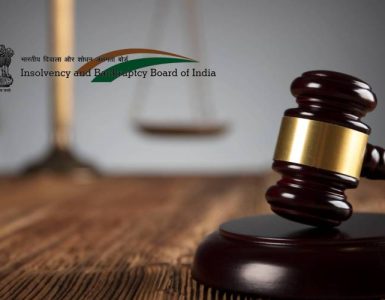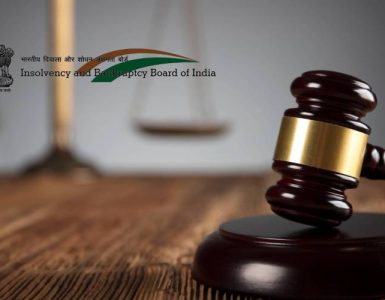Section 29 A of the Insolvency and Bankruptcy Code, 2016 (“IBC”) lists the person who are not eligible to be “Resolution Applicant” and Section 230 of the Companies Act, 2013 deals with the compromise or arrangement with the creditors and members.
This article analyses the judgment passed by the Hon’ble Supreme Court in Arun Kumar Jagatramka vs. Jindal Steel and Power Limited, in relation to Gujrat NRE Coke Limited (“GNCL”) in which Apex Court has linked the Section 29A of IBC and Section 230 of the Companies Act, 2013.
Facts of the Case
- GNCL ran into financial crises due to adverse market scenario in early 2009. After 2015, Debt Realignment Scheme was submitted by the Company but the same was not approved by lenders.
- In 2017, GNCL filed an application under section 10 of the IBC with NCLT Kolkata Bench for its revival.
- Arun Kumar Jagatramka, Promoter of the GNCL submitted resolution plan but because of the IBC Ordinance 2017 inserting section 29A, promoter became ineligible to submit resolution plan.
- New Resolution Plan was submitted by the Rare Asset Construction Private Limited but the same was not approved by the Committee of Creditors.
- Meanwhile, Application under section 230-232 was filed by the promoter of the Company which was accepted by the NCLT and against the same, Jindal Steel and Power Limited filed an appeal with NCLAT in the capacity of operational creditors.
- NCLAT reversed the order passed by NCLT vide order dated 24th October 2019 stating that restrictions under section 29A of IBC would flow into section 230 of the Companies Act, 2013 by default, once any corporate debtor is under IBC. As mentioned above GNCL was already under section 10 of IBC filed by corporate debtor itself
- Against the order of NCLAT, Arun Kumar Jagatramka, promoter and applicant as member under section 230 of the Companies Act, 2013 filed an appeal with the Supreme court.
Section 29A of IBC
Section 29A was introduced in the IBC through IBC Amendment Act 2017. Pursuant to section 29A(g) of the IBC, promoter of the corporate debtor in which a preferential transaction, undervalued transaction, extortionate credit transaction or fraudulent transaction has taken place and in respect of which an order has been made by the Adjudicating Authority under this Code is ineligible to submit a resolution plan.
Section 29A also restricts the person who are in concert with the persons mentioned therein from submission of resolution plan. The term ‘in concert’ has not been defined under the Amendment Act. However, the Bankruptcy Code provides that words/expressions not defined under the Bankruptcy Code shall have the meaning assigned to them under other acts identified under the Bankruptcy Code, including the Securities Exchange Board of India Act, 1992. Therefore, the definition of person acting in concert (“PAC”) will have to be borrowed from the SEBI (Substantial Acquisition of Shares and Takeover) Regulations, 2011 (“Takeover Code”) that defines PAC as persons who have the common objective/purpose of acquisition of shares/voting rights in / exercising control over a company pursuant to an agreement or understanding, formal or informal, directly or indirectly co-operate for the acquisition of shares/voting rights in / exercise of control of the company.
Hon’ble Supreme court in the Swiss Ribbons Pvt. Ltd. & Anr. Vs. Union of India & Ors. – Writ Petition (Civil) No.99 of 2019 has held that the primary focus of the legislation is to ensure the revival and continuation of the corporate debtor by protecting the corporate debtor from its own management and from a corporate death by liquidation.
In the case of company, investors and management of the company are different. Board of Directors, promoters takes/influences the majority decisions of the company. Section 29A was introduced with the consideration that it is not apt to give corporate debtor again in the hands of the same management/promoters of the Company who may be the reason for initiation of CIRP of the Corporate Debtor.
In the present case, Supreme Court has given following observation w.r.t Section 29A of the IBC: –
- Legislative intention behind enactment of a strict regime in relation to insolvency and bankruptcy was to provide an instrument for timely resolution of creditors’ grievances.
- Correct Interpretation of the IBC would be one which facilitates its salutary objects and clears the cobwebs of the previous legal regime which was essentially a debtor’s paradise.
- It was held in Chitra Sharma vs. Union of India [(2018) 18 SCC 575] and ArcelorMittal India Private Limited vs. Satish Kumar Gupta [(2019) 2 SCC 1], that Section 29A has been introduced with a specific purpose which is to protect the interest of the creditors and disallow the indirect entry of the management which is responsible for the default.
- A person who is the cause of problem cannot be part of the process of solution.
Section 35(f) of the IBC which deals with the power of the Liquidator also restrict the Liquidator from selling the movable or immovable properties of the Corporate Debtor to the resolution applicant who is not eligible to submit resolution plan.
Section 230 of the Companies Act, 2013
Regulation 2B of the Insolvency and Bankruptcy Board of India (Liquidation Process) Regulations, 2016 (“Liquidation Regulation”), gives 90 days’ time to take steps under Section 230 of the Companies Act, 2013. Pursuant to section 230(1) compromise or arrangement can be proposed by the Company itself or Members or Creditors or Liquidator.
Further as per the proviso of Regulation 2B (1), if the person is ineligible to submit resolution plan such person shall not be the party to the compromise or arrangement.
Company can be saved from getting dissolved if compromise or arrangement is entered between the Company and its creditors. Primary objective of the IBC is not only to ensure protection of creditors but to provide protection to all stakeholders. Continuing the operations of the Company is in the interest of all stakeholders and hence IBC allows further 90 days even if the liquidation order is passed. Compromise or Arrangement under section 230 of the Companies Act, 2013 is the last chance to save the Company.
In the present case, Supreme Court has given following observation w.r.t Section 230 of the Companies Act, 2013: –
- When a company is under liquidation, the statutory intention of the IBC has to be upheld and the ineligibility under Section 29A should also be considered for section 230 when it is sought to be invoked. This is by reason of the fact that the back-door entry sought to be prohibited under Section 29A cannot be permitted in a similar situation arising out of the provisions of Section 230.
- In Meghal Homes vs. Shree Niwas Girni K.K. Samiti court has considered the commercial morality and held that a scheme of compromise and arrangement under Section 391 of the Companies Act, 1956 (now section 230 of the Companies Act, 2013) must intend to facilitate revival of a company.
- It was held that for a company under liquidation, the main aim of compromise and arrangement shall be revival of the company and this purpose would be hampered if the erstwhile management is handed over the affairs of the company.
Conclusion
In this case, Promoter of the Corporate Debtor cannot propose a compromise or arrangement under section 230 of the Companies Act, 2013 since he is ineligible under section 29A of the IBC.
Pursuant to section 240A of the IBC, promoters of MSMEs can be the resolution applicants for MSMEs undergoing the CIRP, even if these promoters are otherwise disqualified under section 29A(c) or section 29A(h) of the IBC, provided they are not disqualified under any other provision of section 29A. Such Promoters of the MSME can also propose compromise or arrangement under section 230 of the Companies Act, 2013.





Add comment